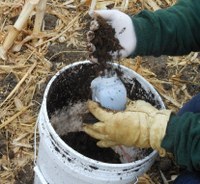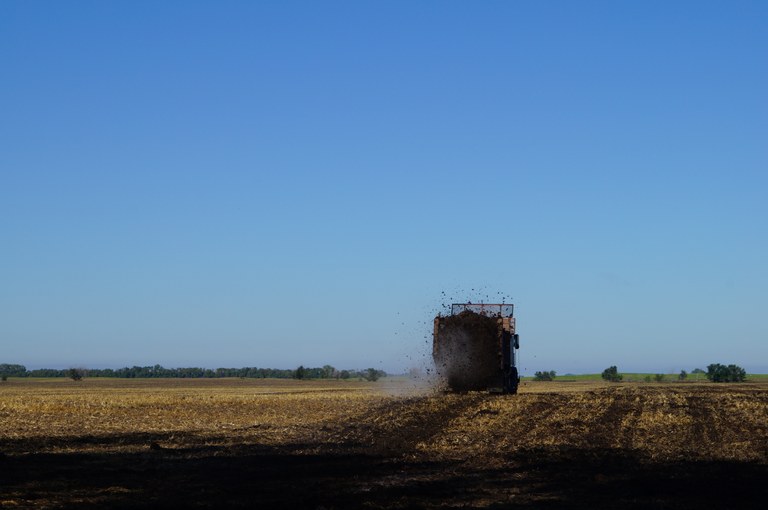Manure Fertilizer Use Recommendations
The NDSU Carrington Research Extension Center conducted a research program to determine if manure can supply the necessary nutrients for typical crops grown in the upper Great Plains.
Manure contains all the nutrients necessary for plant growth but these nutrients are primarily in the organic form, which is not readily available for plants. Microorganisms naturally present in the soil break down the manure and during that process nutrients are more slowly made available for plant growth compared to commercial (inorganic) fertilizer. The rate at which the nutrients are made available through this process will vary depending on soil conditions and what species of animal the manure came from.
Corn, canola, and hard red spring wheat were used in the research trials. Five trials using spring wheat were conducted to compare the effect of manure application (fall- and spring-applied) versus commercial fertilizer. Two additional studies for each canola and corn compared spring applied manure with commercial fertilizer. Plots with no fertilizer were the control treatment for all the trials.
- Corn yields did not vary significantly when commercial fertilizer vs. spring-applied manure were compared.
- Canola yields were significantly lower when spring-applied manure was compared with commercial fertilizer. The release of N from spring-applied manure is too slow for this high demand crop.
- Fall-applied manure vs. commercial fertilizer were statistically similar for the spring wheat trials.
Following are some recommendations for using manure as a fertilizer source.
- Sample the manure that is going to be used to determine the nutrient content. Information about manure sampling labs can be found by going to: www.ag.ndsu.edu/lem/resources/manure-nutrient-sampling-and-testing.
- Credit 50% of the total N in the manure analysis as available the first year of application.
- Manure nutrients are a complete substitution for commercial fertilizer for corn production and can be applied in the spring or fall.
- Short-season crops, such as spring wheat and canola, will have a high N-demand at the beginning of the growing season and require 20 to 40 pounds per acre supplemental commercial N fertilizer if manure is spring-applied. The same recommendation may be beneficial for fall-applied manure as well.
Livestock manure can be used as a sole fertilizer for select crops grown by North Dakota producers. More information on this study, including data, can be found by going to: www.tinyurl.com/NDManureFertilizer.
Mary Berg
Area Specialist
Livestock Environmental Management



